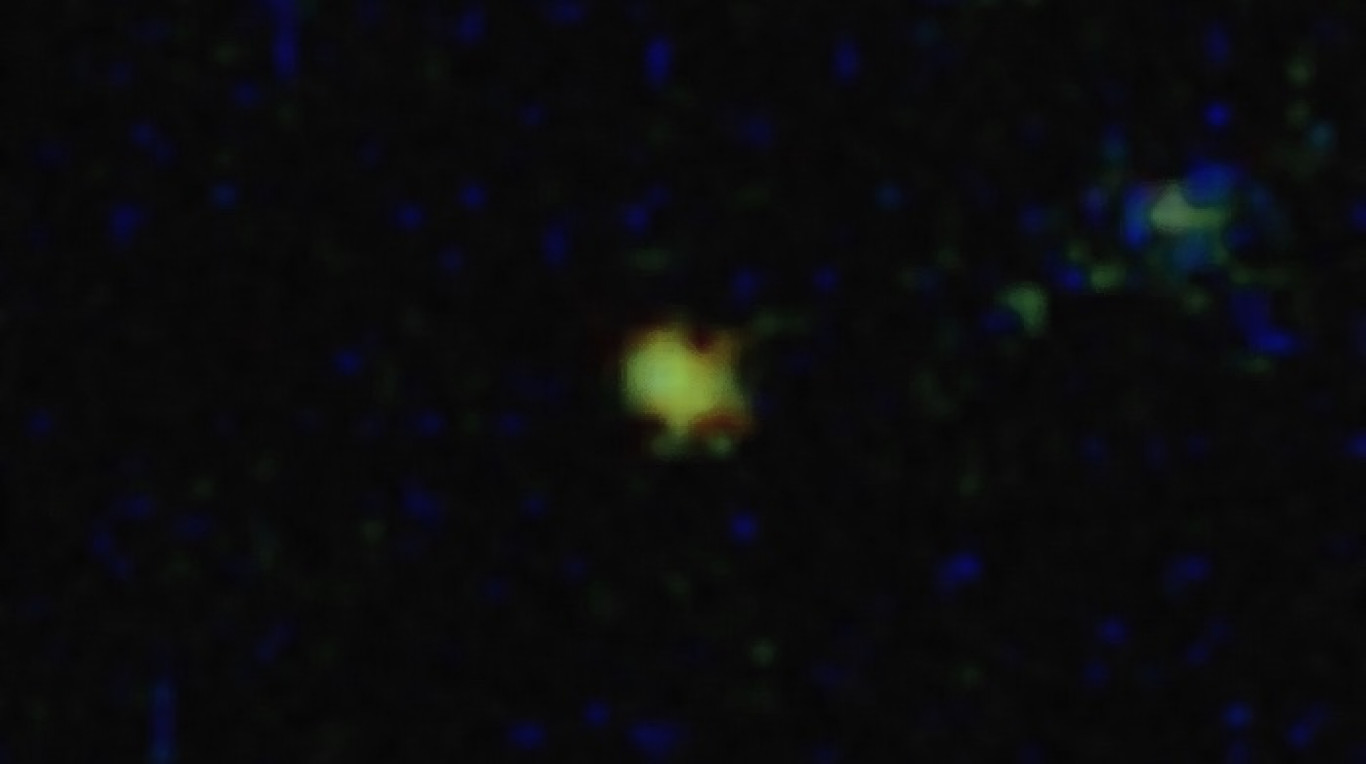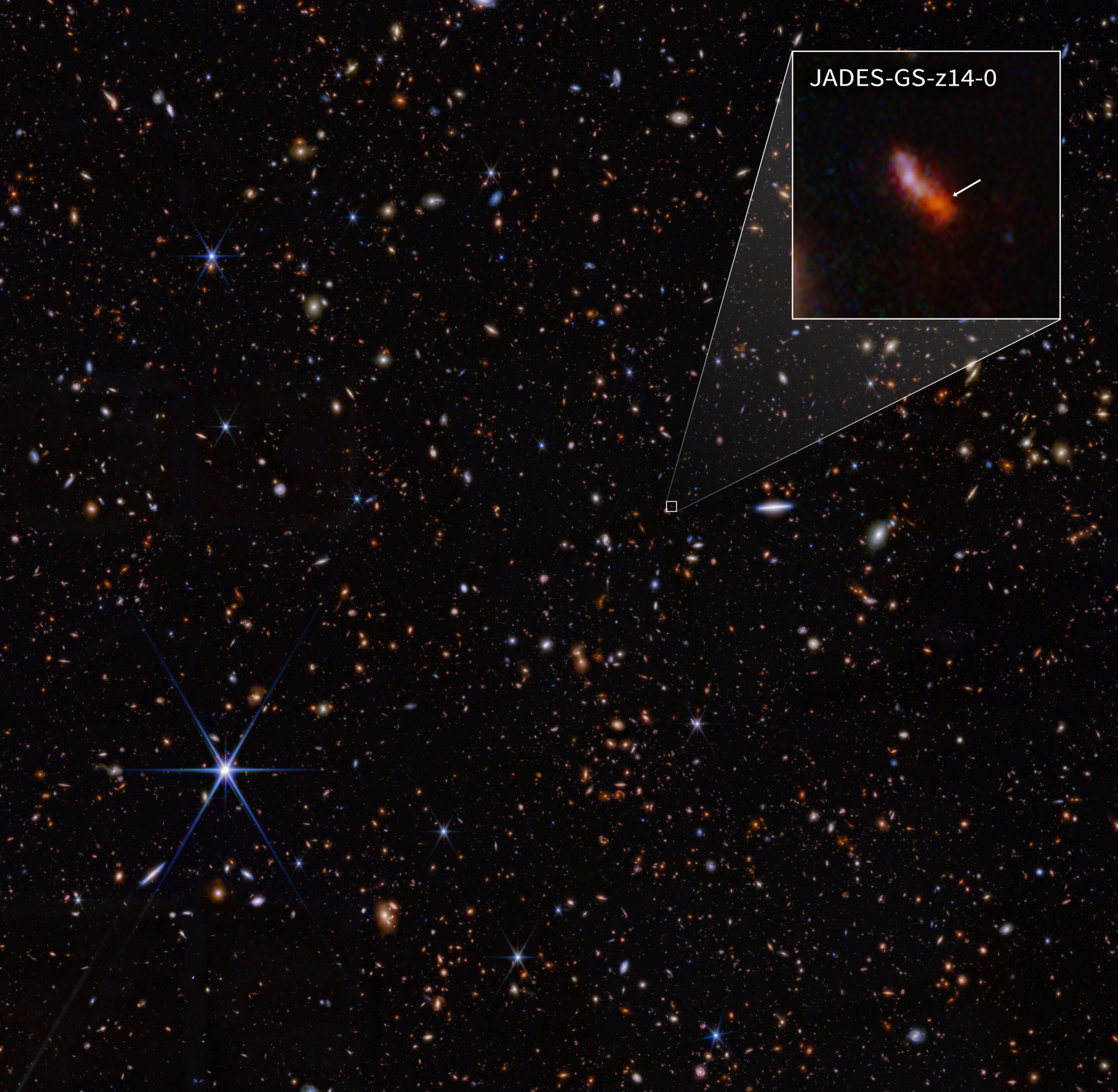An international research team has discovered carbon using the James Webb Space Telescope in one of the oldest known galaxies. he wrote on Wednesday The Guardian, raising the possibility that the basic conditions necessary for the evolution of life in the universe were available much earlier than previously thought.
The galaxy, codenamed GS-z12, was seen by a space telescope as it looked 13.45 billion years ago – 350 million years after the Big Bang 13.8 billion years ago. Astronomers measured the elemental composition of a galaxy about 100,000 times smaller than the Milky Way using the James Webb near-infrared spectrometer, NIRSpec, and published their results for the first time last year. Announced in November On the arXiv preprint server.
photo_camera
Galaxy GS-z12 in a false-color image taken by the James Webb Space Telescope
Image: NASA, ESA, CSA, STScI
“that's it [univerzum történetében a] Roberto Maiolino, a chemist at the University of California, said it was “the first time an element heavier than hydrogen has been discovered.” He is professor of astronomy at the University of Cambridge and co-author of a peer-reviewed study soon to be published in the journal Astronomy & Astrophysics. According to the researcher, the fact “that so much carbon was found in such a distant galaxy indicates that life could have formed in the very early stages of the universe, near the dawn of the universe.”
Carbon today is fourth after hydrogen, helium and oxygen The most common item In our galaxy, it is a major component of organic compounds, and A biological life a base. During the Big Bang, only hydrogen, helium and a little lithium were created in what is called primary nucleosynthesis, so heavier elements like carbon are all present inside stars, supernova explosions, or Neutron star collision Created during
“The first stars hold the holy grail of chemical evolution, because they are built only from primitive elements and behave very differently to modern stars,” said Francesco DiEugenio, an astrophysicist at the University of Cambridge, who participated in the research. According to him, the galaxy is essentially an embryo that can later grow much larger – but even in this young state it is very massive. “By investigating how and when the first metals formed in stars, we can identify the first stages on the path to life,” he said.
The new discovery may indicate that supernova explosions of first-generation stars (third-generation stars) actually dispersed a lot of carbon into their environment, hundreds of millions of years earlier than previously thought.
Speaking to The Guardian, Rafael Alves Batista, who was not involved in the study, said: “The result is a big step forward, something we did not know before.” At the same time, according to the astrophysicist from the Sorbonne University in Paris, the discovery of carbon does not mean that conditions were suitable for the development of life. “Most of these early stars are very massive and reach the end of their life cycle early. Even if there are planets around them, I'm not very optimistic that they have the conditions necessary for life to evolve,” he said.
The American Space Agency a few days ago Announce, that researchers have found the oldest galaxy discovered so far by a space telescope. The cosmological redshift of the JADES-GS-z14-O galaxy (the increase in the wavelength of light due to the expansion of the universe that can be detected at large distances) is 14.32 valueThat is, it can be seen 294 million years after the Big Bang, 13.8 billion years ago, with the help of James Webb.
photo_camera
The JADES-GS-z14-0 galaxy, born just 300 million years after the Big Bang, captured by the James Webb Space Telescope
Image: NASA/ESA/CSA/STScI/Brand Robertson et al
One of the main goals of the James Webb Space Telescope, which launched on Christmas Day 2021, was to examine the oldest galaxies and stars in the universe, giving researchers an unprecedented look at the history of the universe's first hundreds of millions of years. Based on the first space telescope measurements, ancient galaxies Brighterappeared more massive and complex than expected, but not so much that the currently accepted Lambda-CDM cosmological model could not. To explain.













































